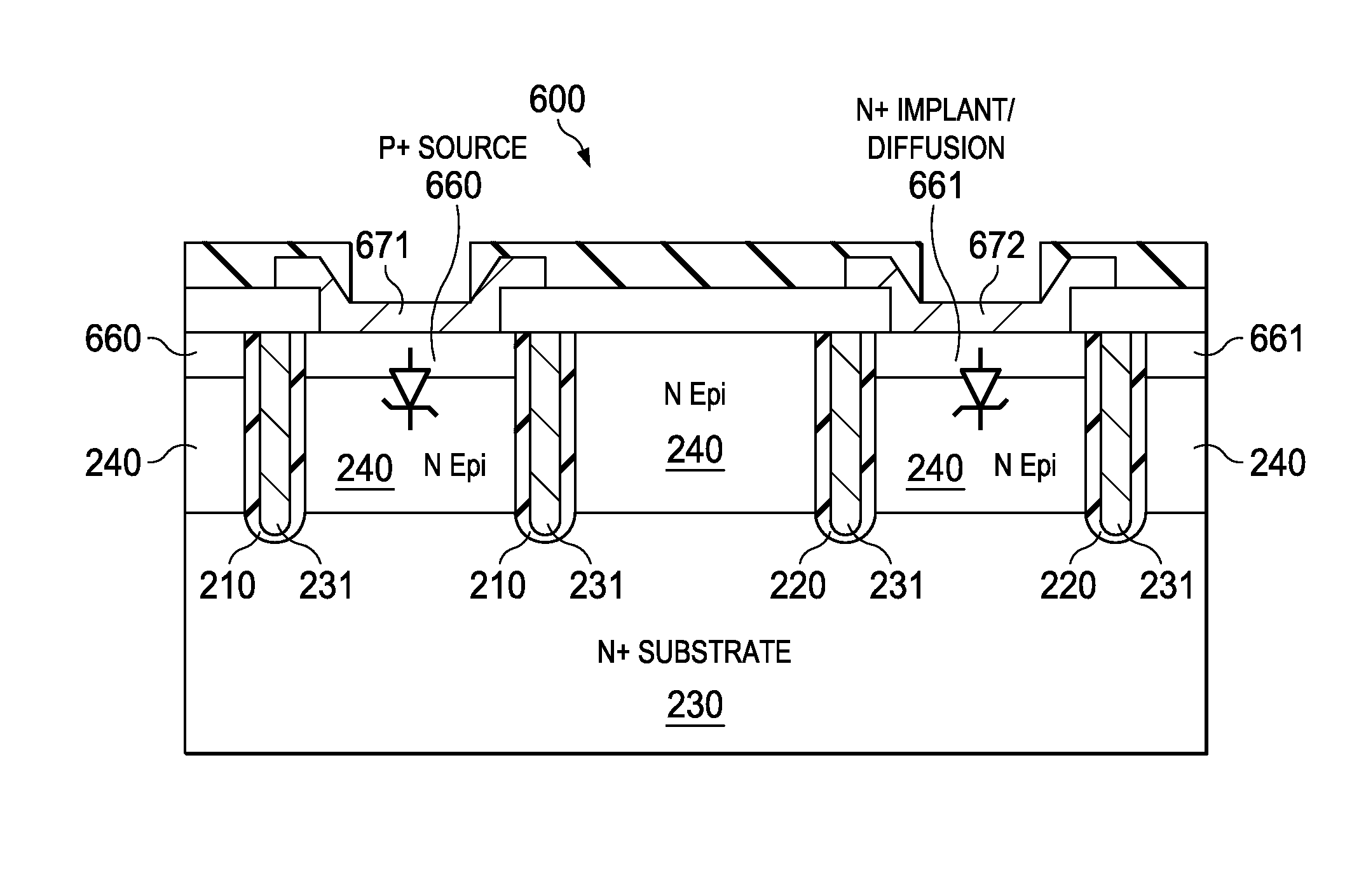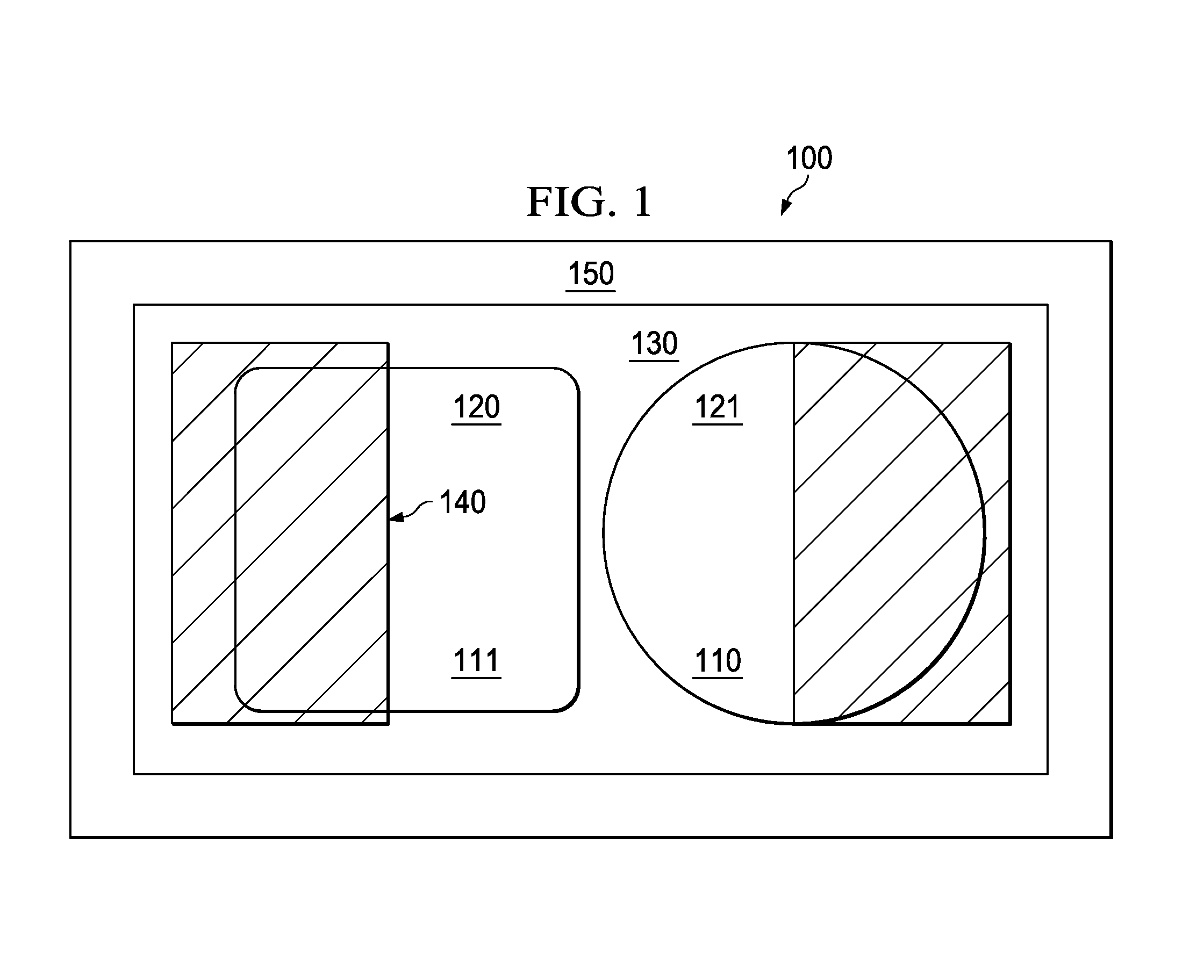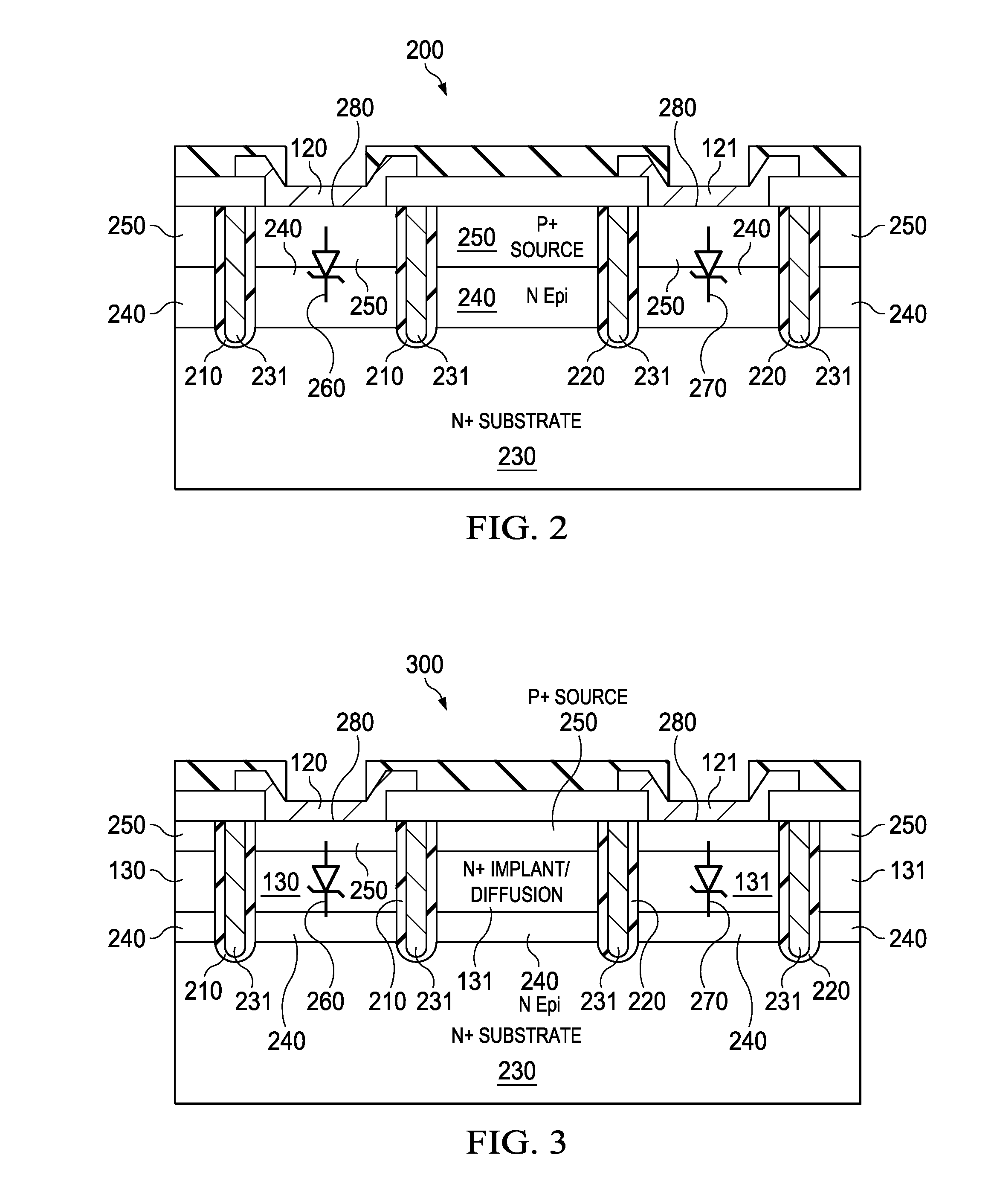Semiconductor diode assembly
a technology of semiconductor diodes and diodes, applied in the direction of diodes, semiconductor devices, electrical equipment, etc., can solve the problems of premature damage of heat-damaged tv devices, and achieve the effects of reducing costs, facilitating device packaging, and less complication
- Summary
- Abstract
- Description
- Claims
- Application Information
AI Technical Summary
Benefits of technology
Problems solved by technology
Method used
Image
Examples
example 1
A Symmetrical Bi-Directional Transient Suppressor
[0019]FIG. 1 depicts the top surface of a partially completed exemplary semiconductor device chip 100 embodying certain aspects of this invention. The chip as depicted has two trenches 110 and 111 located at the middle portion of the chip. Although one circular trench and one square trench are depicted they may be replaced by other shapes such as oval, oblong, polygon and non-geometrical trenches. Each of the trenches 110 and 111 is depicted as fully enclosing a columnar region of the semiconductor material that makes up the device chip 100. In this example, the semiconductor material is silicon but other semiconductor materials such as silicon carbide, gallium nitride, gallium arsenide, etc. are also contemplated.
[0020]The inside diameter of the circular trench of this exemplary device 150 μm, and the trench width is 1.5 μm. Trenches are etched into the silicon chip from its top surface with the chip still a part of a silicon wafer. ...
example 2
An Asymmetrical Bi-Directional Transient Suppressor
[0034]FIG. 4 depicts another exemplary device 400. The main difference between device 400 and device 300 depicted in FIG. 3 is that the layer 130 in FIG. 3 is absent from the vicinity of the p-n junction diode 401 on the left side of FIG. 4 but is present near the p-n junction on the right side of FIG. 4. This is accomplished with a masking operation that covers the diode area during the ion implant step resulted in the n-layer near the junction diode 411. As a result, the junction breakdown of the diode 411 will be lower by a predictable voltage than that of the diode 401. This device is advantageous in applications where the expected voltage transients are higher with one polarity over the opposite polarity.
example 3
Another Symmetrical Bi-Directional Transient Suppressor
[0035]FIG. 5 depicts yet another exemplary device 500. Device 500 as depicted is a, bi-directional, symmetrical transient suppressor. The main difference between device 500 and device 200 is that in device 500 the substrate 230 and the epitaxial layer 240 are of the opposite doping type while in the device 200, they are of the same polarity.
[0036]As a consequence, the p-n junctions 550 and 551 in device 500 are formed between the substrate and the epitaxial layer. In this exemplary device, as well as in the previous devices, because the diode junctions 500 and 551 are planar, they also are advantageous over non-planar junctions in the known art. Furthermore because the doping concentrations of the substrate and the epitaxial layer can be controlled more tightly than that of the implanted or diffused layer, the control over the junction breakdown voltage may also be tighter.
PUM
| Property | Measurement | Unit |
|---|---|---|
| diameter | aaaaa | aaaaa |
| angle | aaaaa | aaaaa |
| diameter | aaaaa | aaaaa |
Abstract
Description
Claims
Application Information
 Login to View More
Login to View More - R&D
- Intellectual Property
- Life Sciences
- Materials
- Tech Scout
- Unparalleled Data Quality
- Higher Quality Content
- 60% Fewer Hallucinations
Browse by: Latest US Patents, China's latest patents, Technical Efficacy Thesaurus, Application Domain, Technology Topic, Popular Technical Reports.
© 2025 PatSnap. All rights reserved.Legal|Privacy policy|Modern Slavery Act Transparency Statement|Sitemap|About US| Contact US: help@patsnap.com



